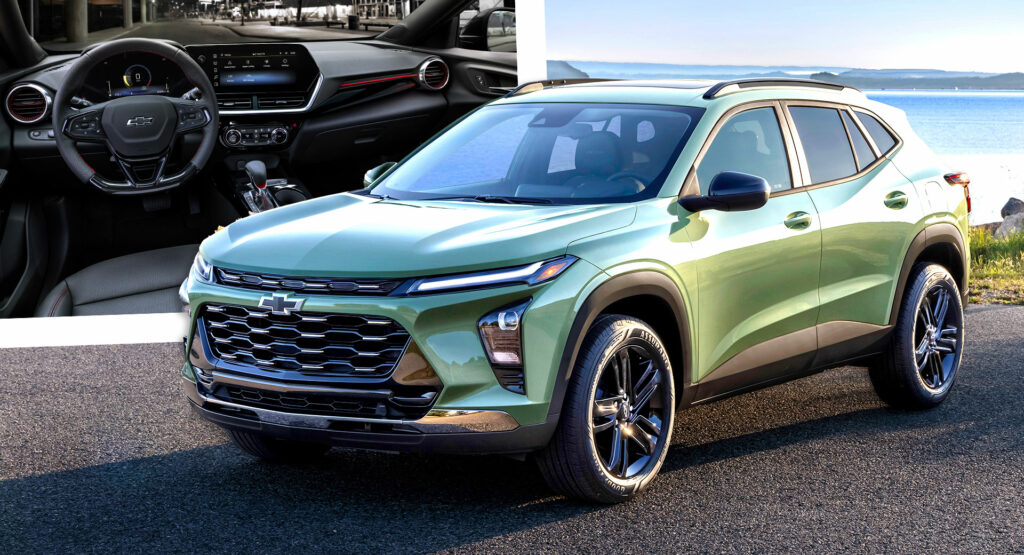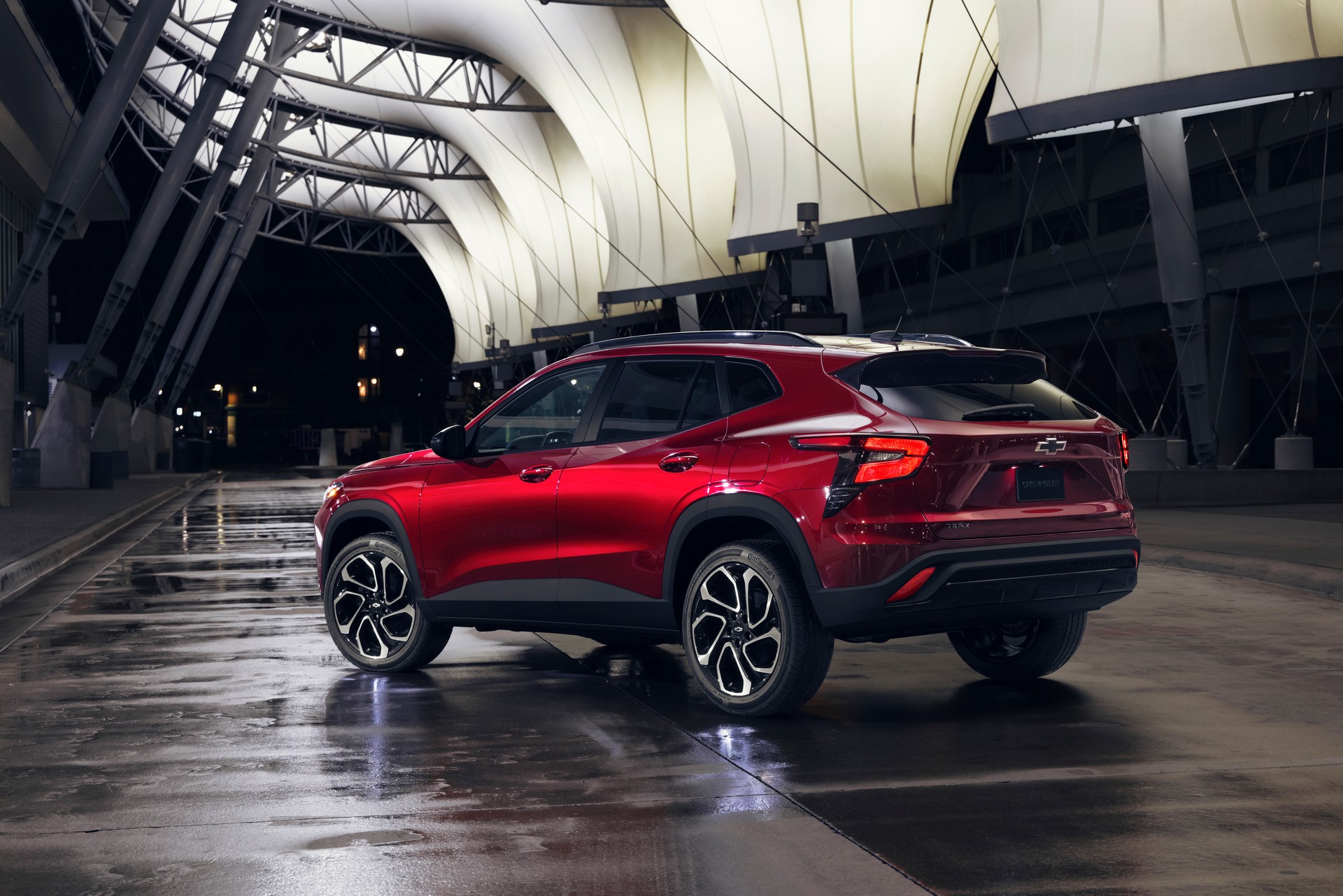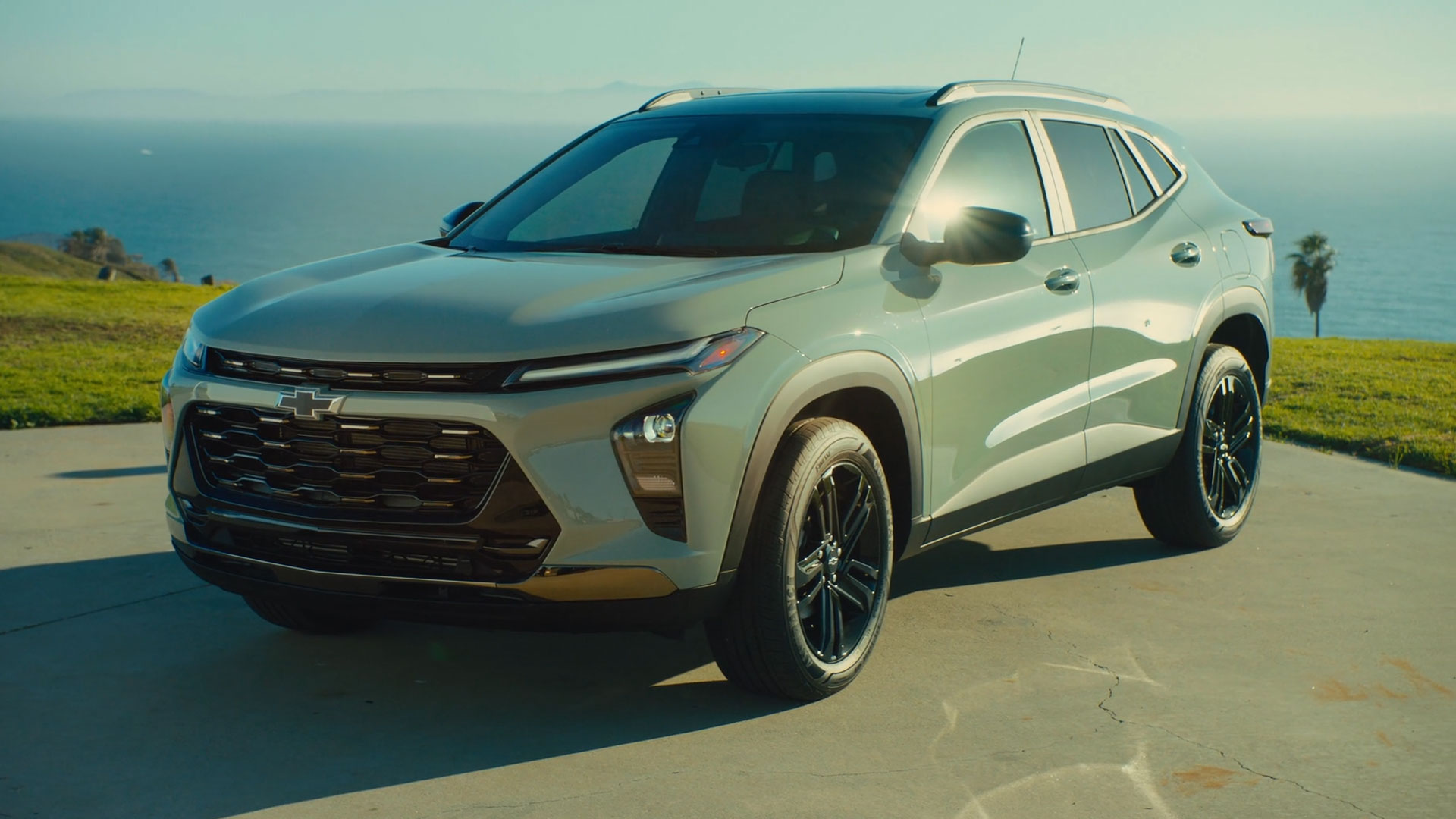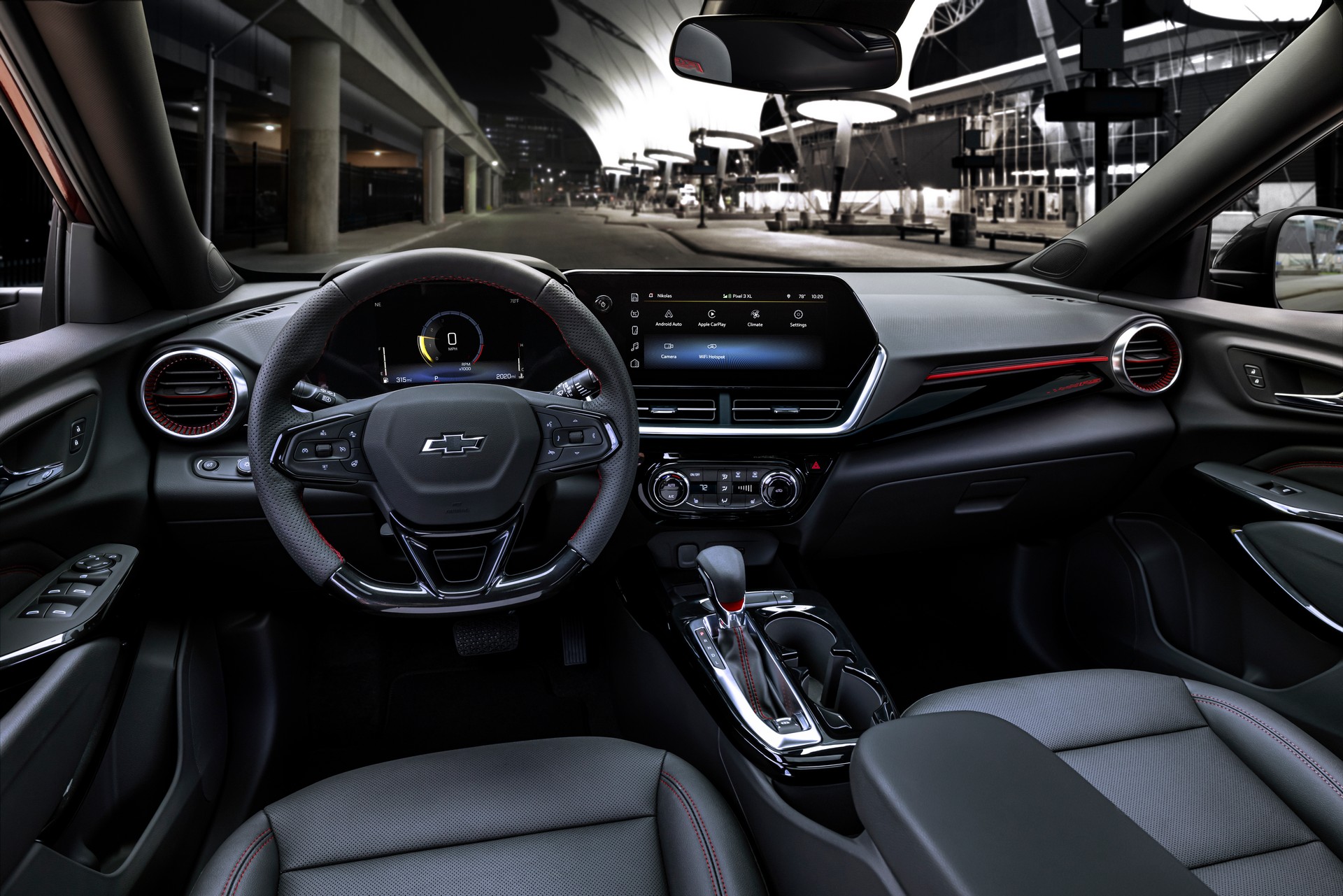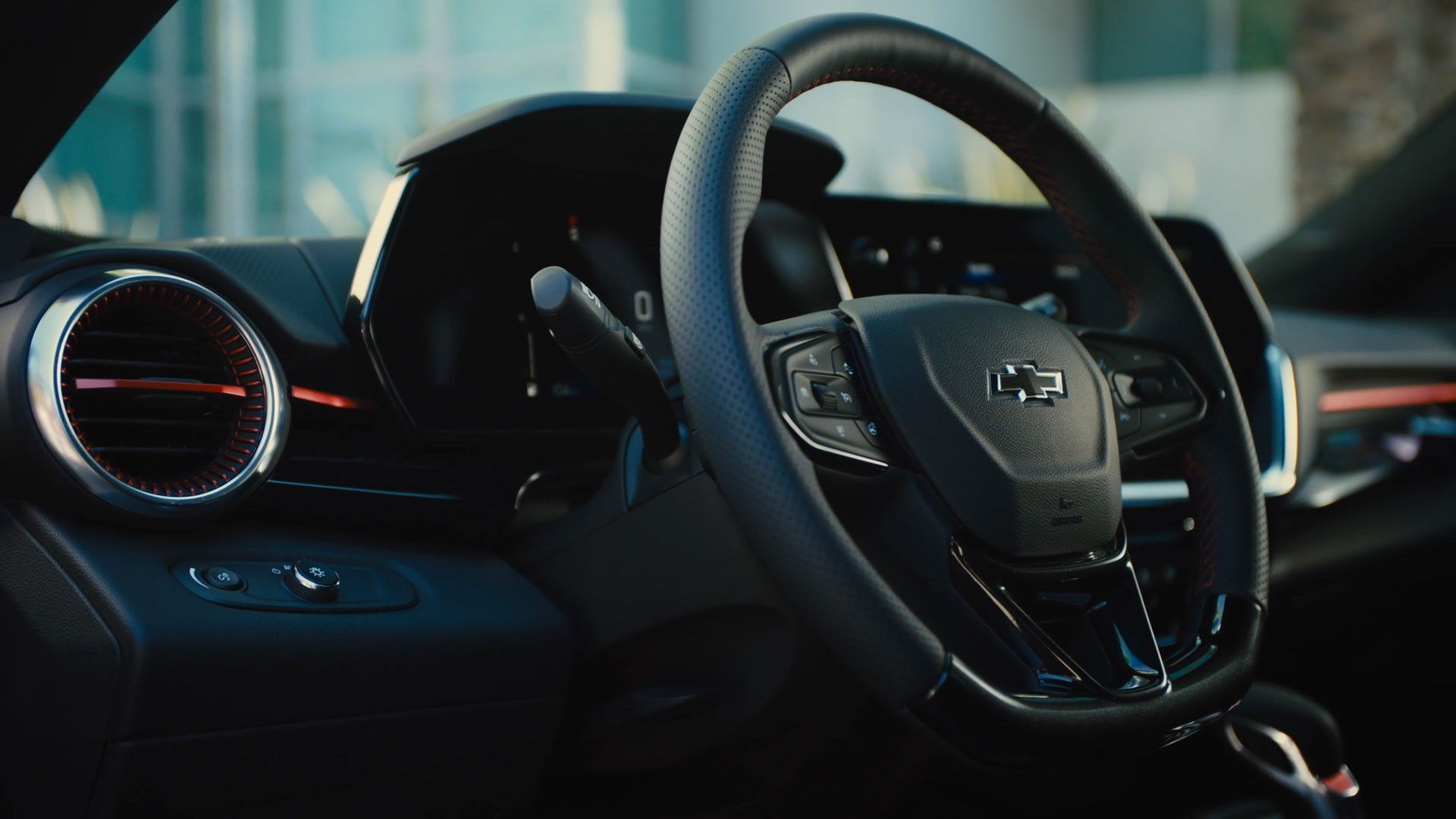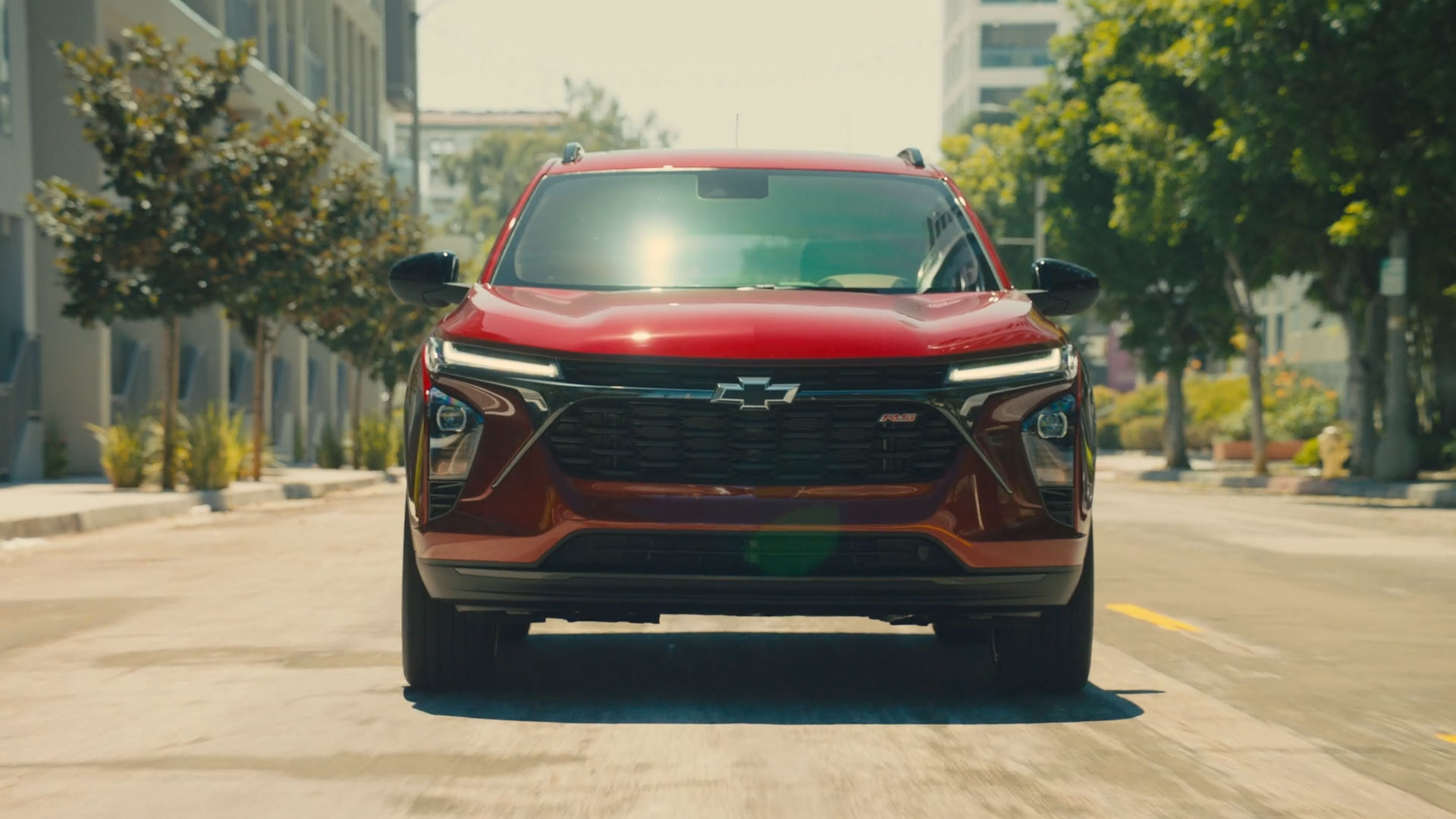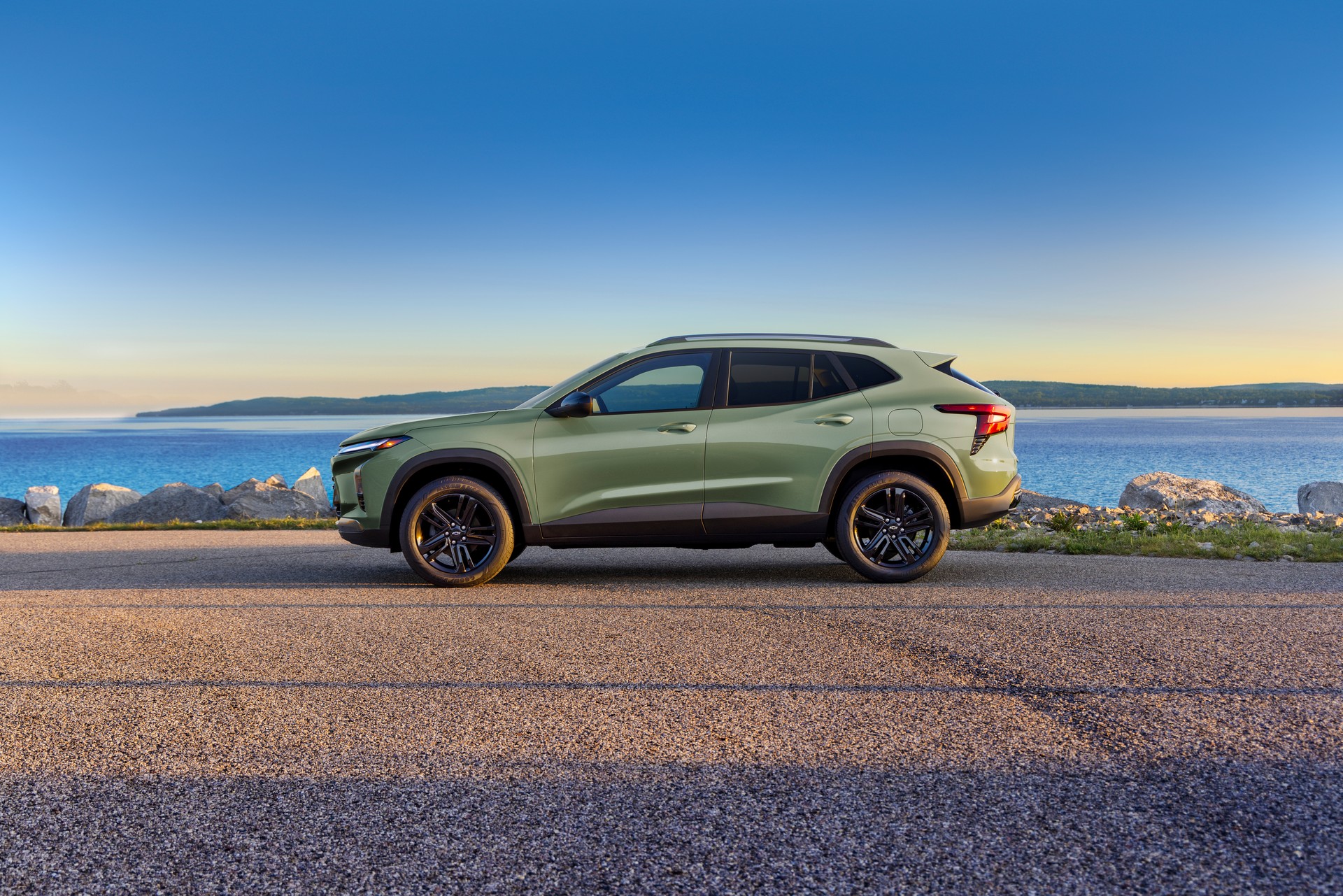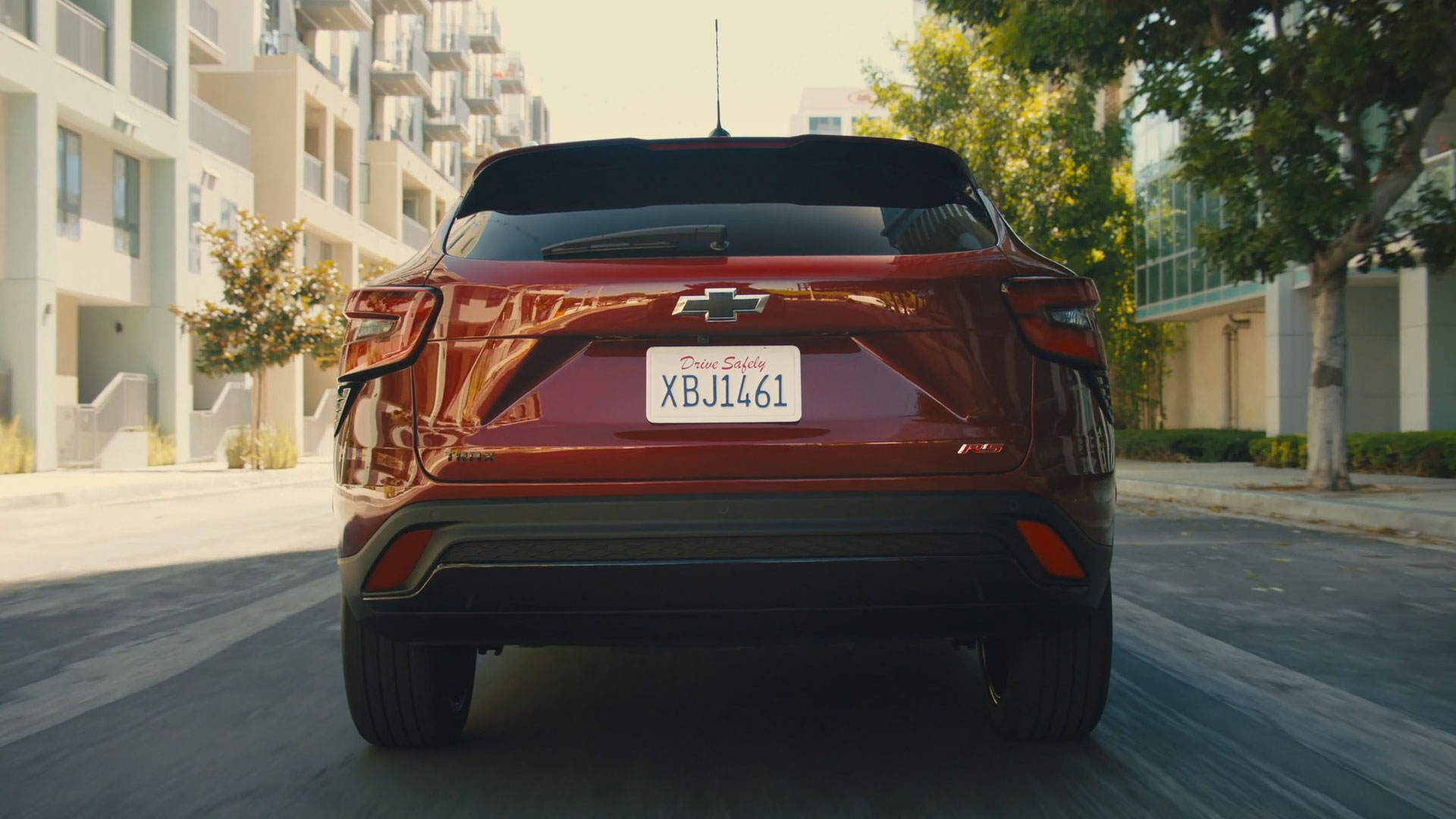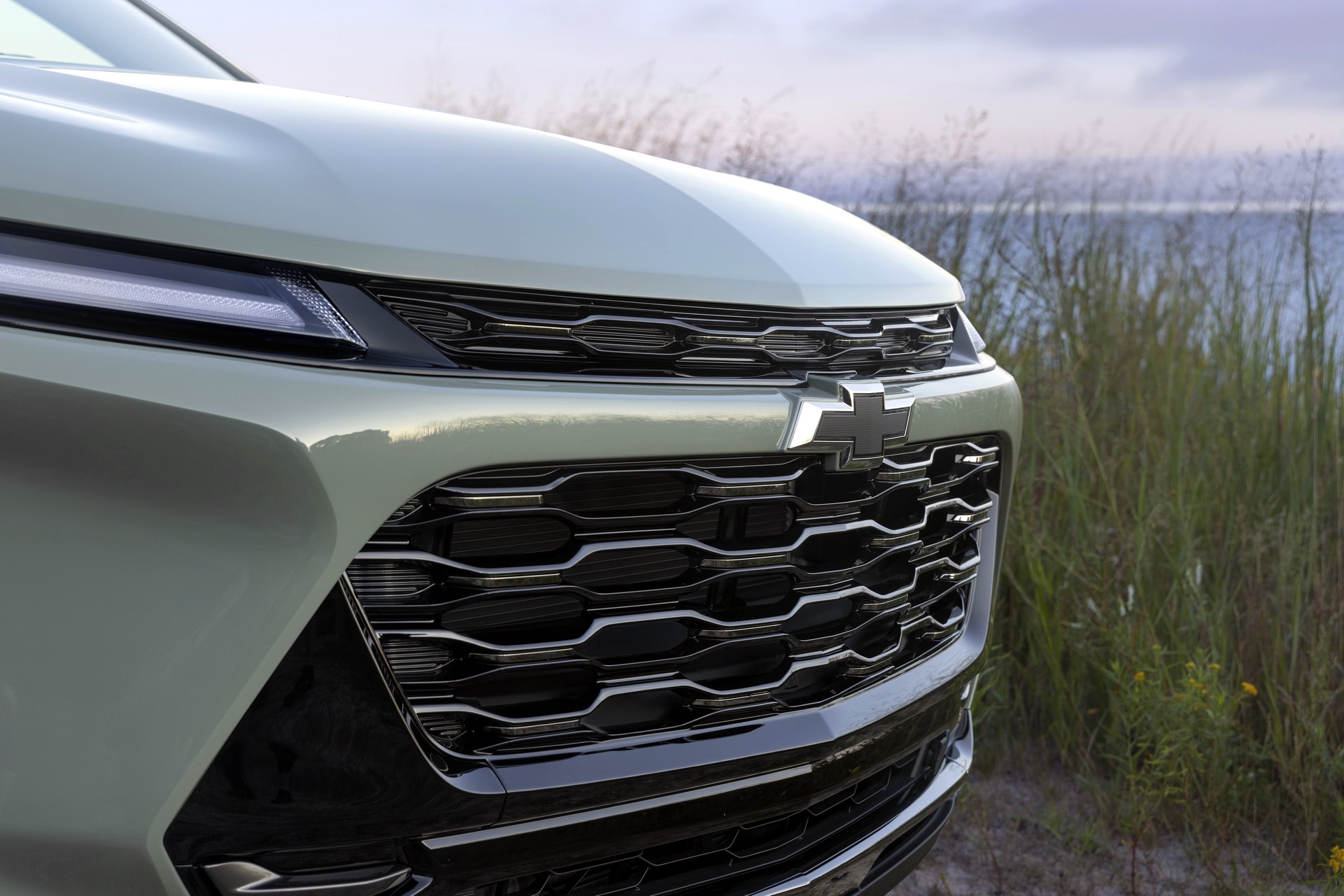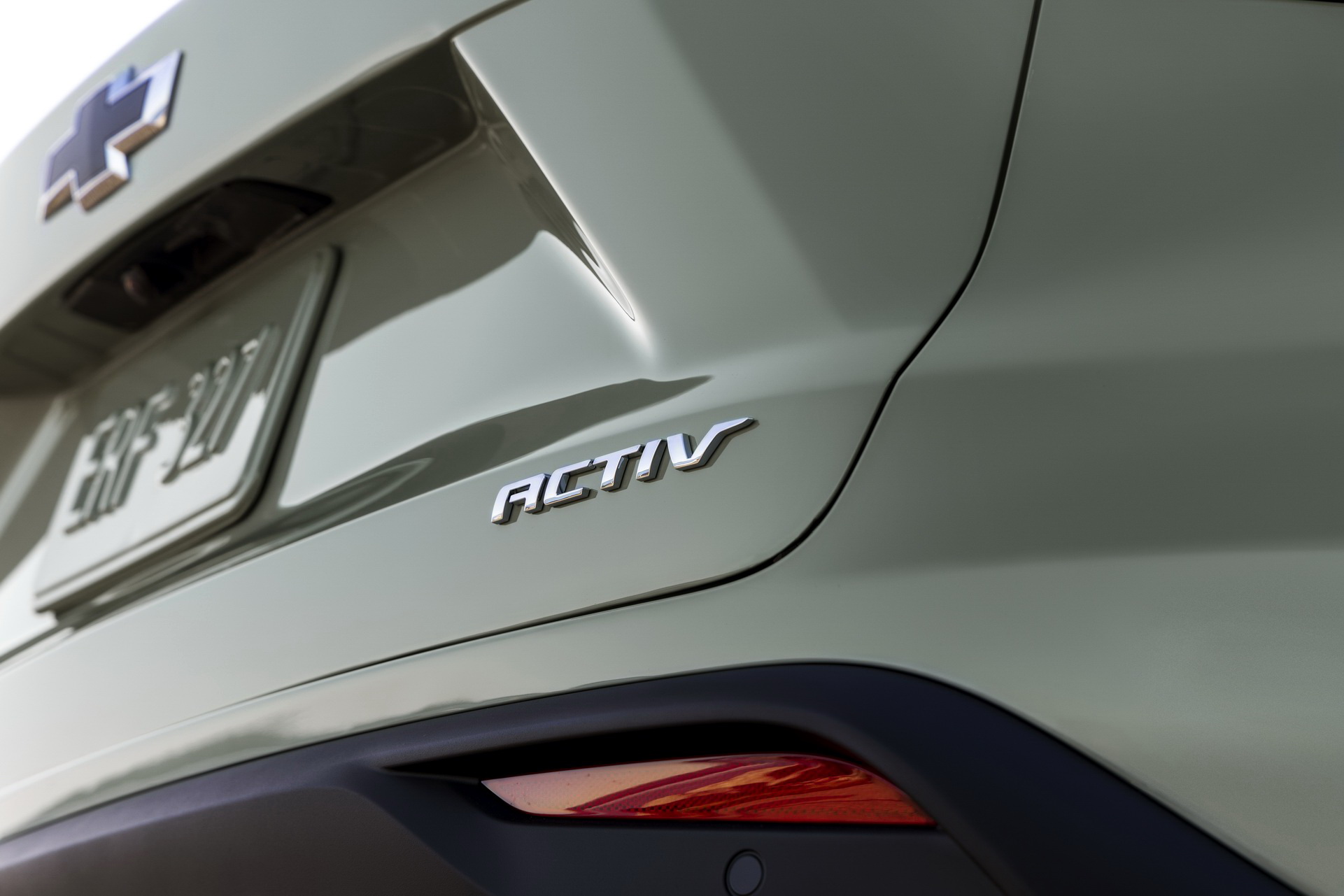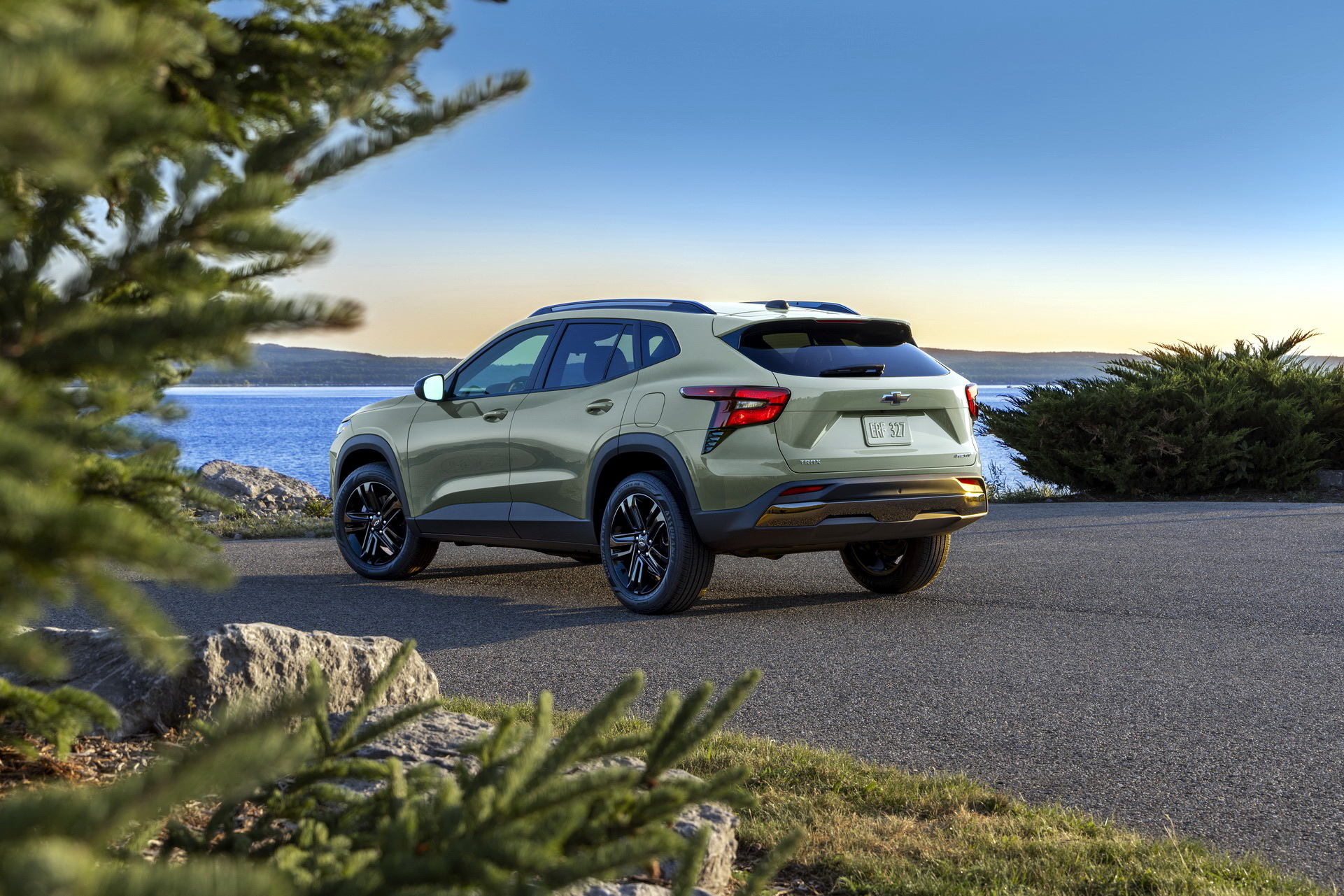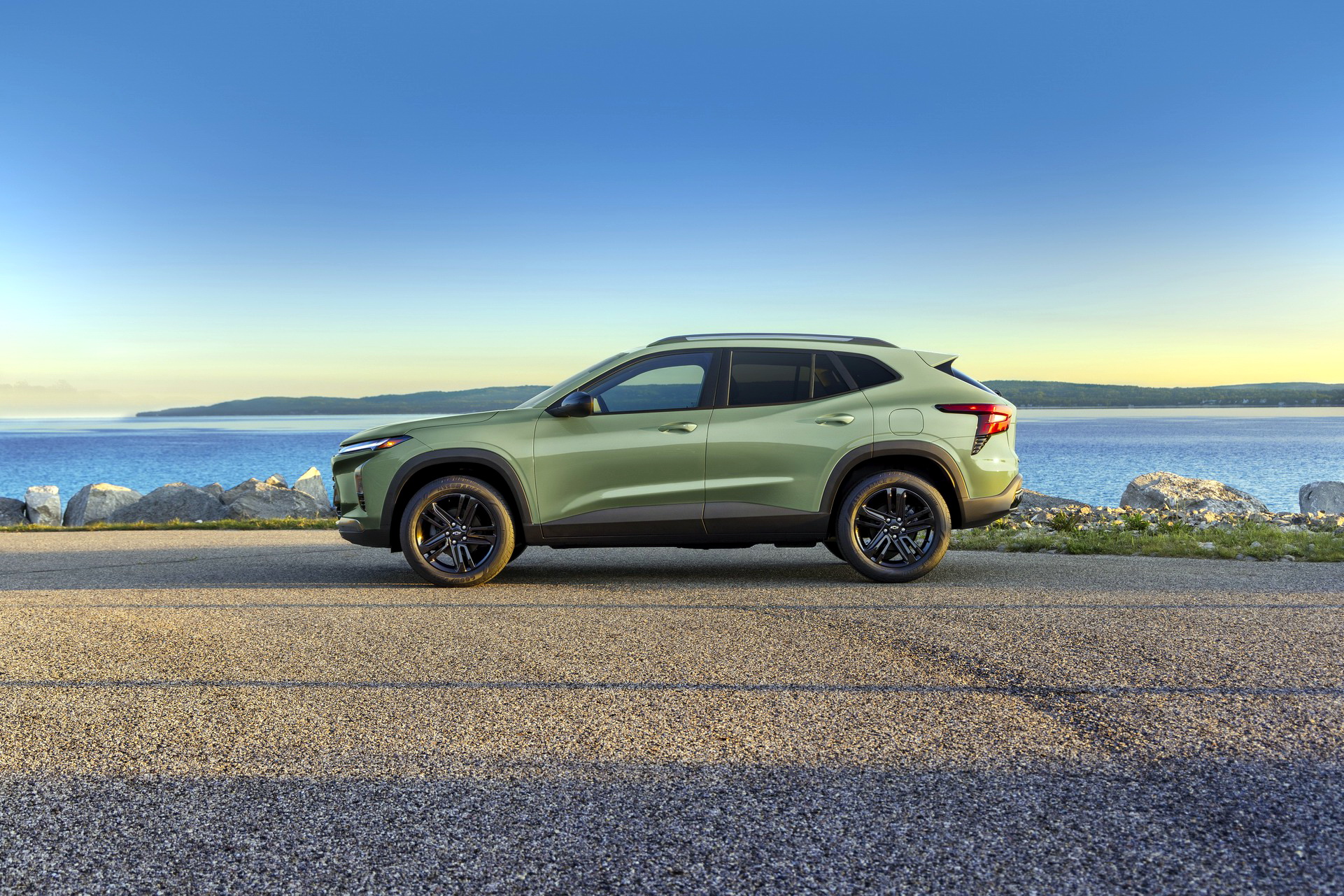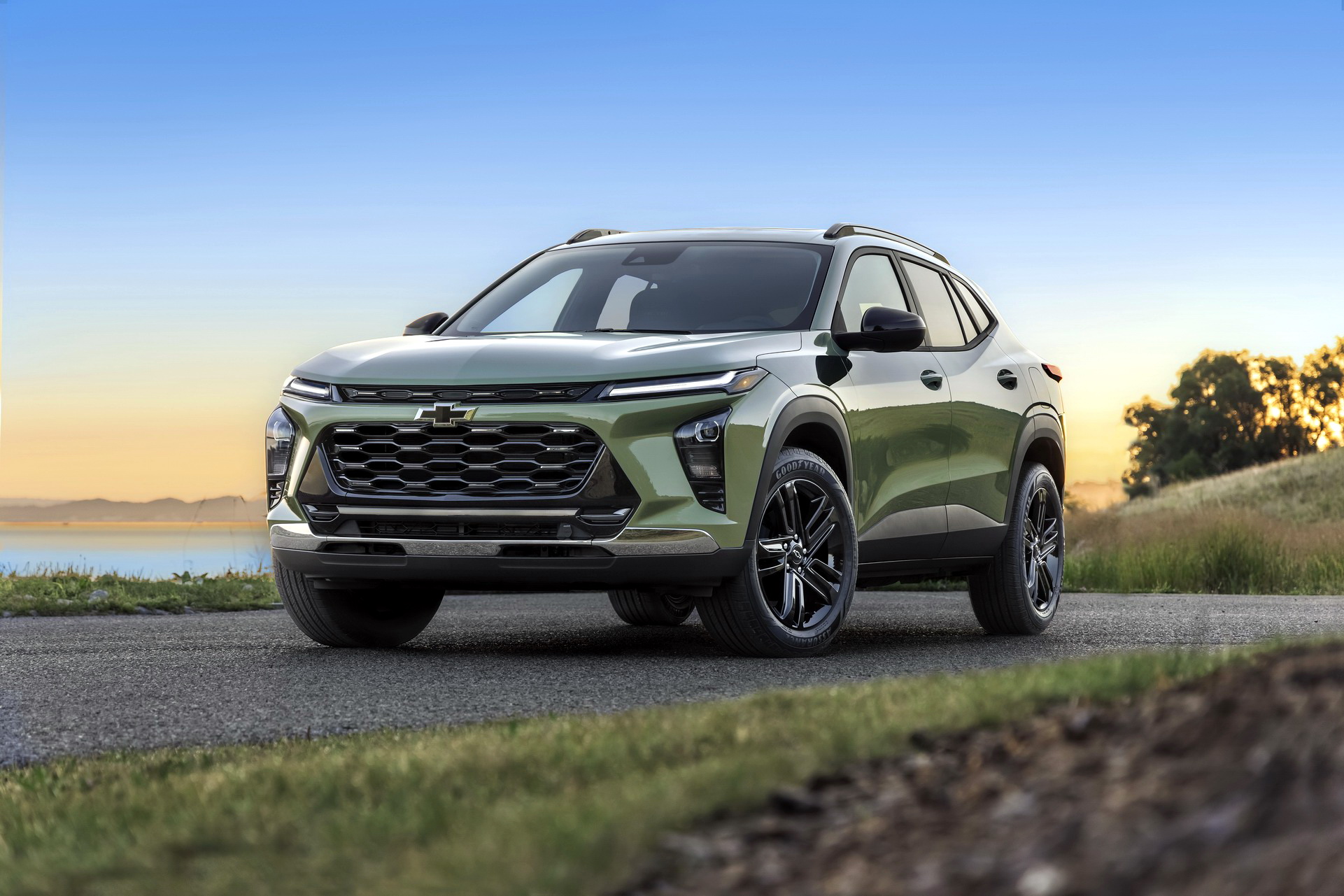First-time car buyers have had it rough as the carpocalypse has seen a number of affordable sedans fall by the wayside. However, it’s not all bad news as Chevrolet has unveiled the redesigned Trax.
Set to become the brand’s entry-level model, following the death of the Spark, Sonic, and Cruze, the 2024 Trax starts at $21,495 and will arrive at dealerships next spring. That’s $205 less than the current crossover, despite being a huge improvement.
Style Meets Affordability
While the outgoing Trax was also affordable, that was the only thing going for it. The crossover screamed cheap and felt out of place anywhere other than a rental car parking lot.
Thankfully, the old model will soon be a distant memory as the 2024 Trax adopts a sportier and more upscale design that draws inspiration from the bigger Blazer. The similarities are immediately apparent as both models have a prominent grille that is flanked by high-mounted LED daytime running lights, which reside above minimalist headlights.
Further back, we can see sculpted bodywork with flowing lines and curvaceous surfaces. They’re joined by a sloping roof and a dynamic beltline that kicks up at an angle.
Driven: The New Trailblazer Solves Chevy’s Goldilocks Problem
Other highlights include plastic body cladding, a hidden exhaust, and C-shaped taillights. The model also sports an angular rear window and unique styling details across each of its five trims.
The entry-level LS rides on 17-inch steel wheels, while the $23,395 LT adopts a more upscale design with bright trim and 17-inch aluminum wheels.
Buyers looking for a sportier appearance can opt for one of the two RS trims. The $23,195 RS1 sports a unique grille and larger 18-inch wheels. The $24,995 RS2 has a similar appearance, but it rides on 19-inch aluminum wheels.
Last but not least, there’s the rugged-looking Trax ACTIV which begins at $24,995. It features titanium chrome accents, an “aggressive-looking rear skid plate motif,” and 18-inch wheels with a black finish.
The improved looks are due in part to the Trax’s larger dimensions as the model is 11 inches (279 mm) longer, 4 inches lower (101 mm), and 2 inches (51 mm) wider than its predecessor. The wheelbase also grows by nearly six inches (152 mm) and this results in an additional 3 inches (76 mm) of much-needed rear seat legroom.
An Interior That Doesn’t Scream Cheap
While entry-level has typically meant dull and plasticky interiors, the Trax’s cabin is a breath of fresh air as it features a modern and upscale design. As Chevrolet explained, the interior has a “lightweight feel, achieved with sweeping lines and light, technical cues that emphasize the vehicle’s width and create a sense of airiness.”
There’s still plenty of plastic, but buyers will find a sweeping dashboard with round air vents that are quickly becoming a Chevrolet signature. Elsewhere, we can see gloss black trim and metallic accents, which help to give the cabin a more premium feel. Buyers will also find a handful of features that typically aren’t found on budget-friendly models including standard privacy glass and active noise cancellation technology.
In terms of equipment, the affordable LS and 1RS trims have analog gauges that are separated by a 3.5-inch display. They’re joined by an 8-inch infotainment system that boasts wireless Android Auto and Apple CarPlay compatibility.
The LT, 2RS, and ACTIV are more advanced as they have an 8-inch digital instrument cluster and an 11-inch infotainment system. The models also have an automatic climate control system, a push-button ignition, and remote start – among other things. Furthermore, the 1RS, 2RS, and ACTIV trims have heated front seats and a heated steering wheel, while the ACTIV also boasts a power driver’s seat.
Besides the equipment differences, the RS2 has a flat-bottom steering wheel and red contrast stitching. The ACTIV, on the other hand, has Evotex seats with yellow accents. Buyers will also find a handful of options including a sunroof and a newly available wireless smartphone charger on the LT, 2RS, and ACTIV.
New Safety Features Including Available Adaptive Cruise Control
To keep drivers safe, there’s a standard Chevy Safety Assist suite of driver assistance systems. It includes Automatic Emergency Braking, Front Pedestrian Braking, and Forward Collision Alert. They’re joined by a Rear Vision Camera, a Following Distance Indicator, IntelliBeam headlights, and Lane Keep Assist with Lane Departure Warning.
Cruise control comes standard, while Adaptive Cruise Control is available on higher-end trims. Customers can also get more advanced safety features such as Lane Change Alert with Side Blind Zone Alert, Rear Cross Traffic Alert, and Rear Park Assist.
A Turbocharged Three-Cylinder With 137 HP
Power comes from a turbocharged 1.2-liter three-cylinder engine that produces an estimated 137 hp (102 kW / 139 PS) and 162 lb-ft (219 Nm) of torque. That’s 18 hp (13 kW / 18 PS) and 15 lb-ft (20 Nm) less than its predecessor, which used a turbocharged 1.4-liter four-cylinder.
Despite sounding like a downgrade, the new model promises improved performance and increased fuel efficiency. In particular, the 2024 Trax will accelerate from 0-60 mph (0-96 km/h) in 8.6 seconds and that’s roughly one second faster than the outgoing model.
The engine is connected to a six-speed automatic gearbox, instead of the continuously variable transmission that is used in the Trailblazer. Officials acknowledged this was a cost-saving move, but noted the gearbox has additional benefits including being relatively lightweight.
While the powertrain sounds reasonable enough, the 2024 Trax will be offered exclusively with front-wheel drive. The move will likely prove controversial, but Chevrolet noted more than 70% of Trax buyers chose front-wheel drive in the past.
Chevrolet didn’t go into many other specifics but confirmed the crossover rides on the same platform that underpins the Chinese Seeker. Of course, that isn’t much of a surprise as the models look virtually identical – although they use different powertrains. It’s also worth noting the Trax will be built in South Korea and share a number of components with the Trailblazer.








